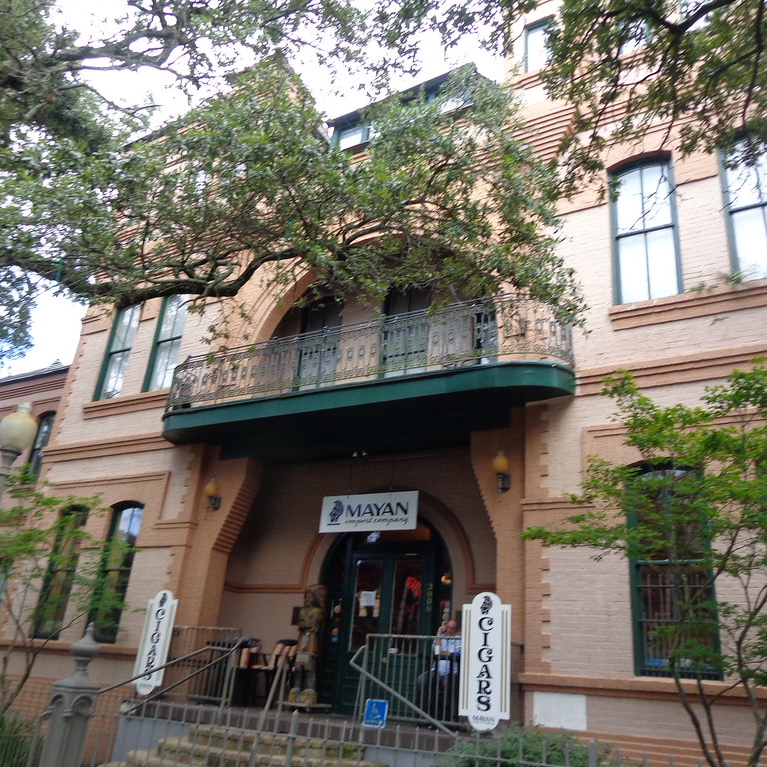Francis Ackeman was an orphan living in the Protestant Orphan Home. He attended Live Oak School, participated in swimming and basketball, enjoyed playing harmonica, and acted as a mentor to children in the orphanage. At the age of 15, Francis was chosen to be King of Carnival by the Krewe of New Orleanians, which is still a Krewe in Mardi Gras today. Francis was enthroned in his orphan home. He was dressed in king attire, which consisted of a leather jacket, slacks, white satin tights, and a robe. The captain of the Krewe, Walter Willians, gave Ackeman a watch. This was a nice gesture of Williams and a treasure to Francis.

Times-Picayune, 3 Mar. 1946, p.15. NewsBank: Access World News – Historical and Current, infoweb.newsbank.com/apps/news/document-view? p=WORLDNEWS&docref=image/v2%3A1223BCE5B718A166%40EANX-12ACA95B467201E0%402431883-12AC986230DAD6CA%4014-12AC986230DAD6CA%40. Accessed 8 Dec. 2020.
Francis was like many youths of that era. Sadly, during that time, many children lived in institutions, and orphanages were very common. Fortunately, they began to dissipate around the 1960s. Francis grew up in the Protestant Orphan Home in New Orleans, which was located at the corner of Constance and Seventh Streets, a building that stands today on a busy stretch of Magazine Street’s retail corridor. As the history of the institution states: “Its, was called into existence by the necessity of supplying a home for the children orphaned by the epidemic of 1853. It received its first aid from the Howard Association, which sent fifty-six orphans left to its care, each with a dower of $100, and gave an additional $2,000, making $7,600 in all. Orphans of both sexes are admitted, as well as half-orphans whose surviving parent is incapable of caring for them. Its support comes from the State, the city, private subscriptions, and membership dues.”1

Many of the city’s orphanages began because of Yellow Fever, which killed thousands of people in New Orleans before it was finally defeated in the early twentieth century. “Yellow fever was fatal. It was gruesome. And in epidemic years, during the months between July and October, it could wipe out 10 percent of the city’s population. Eventually, it earned New Orleans the nickname “Necropolis” — city of the dead. Yellow fever didn’t just kill. It created an entire social structure based on who had survived the virus, who was likely to survive it and who was not long for this world.”2
Orphanages are also referred to as asylums. Today people think of asylum as an institution offering shelter and support to people who are mentally ill. But asylum is also referred to as a place granted to people for national protection. The Times-Picayune states, “Children who are left without mothers are often placed in the asylums by their fathers for education and religious training.”3 Fathers knew they would not be able to raise their children on their own, and though this was an awful choice, it was probably the only decision they could make at the time. This is the kind of asylum where orphaned children have been put for shelter, education, religious training and hope for the future!
Orphanages still exist today, but have been replaced with the foster care system. But the existence of orphanages was essential during the early 1900s. They gave Francis Ackeman his unique story and provided him with his lucky chance to become a part of Carnival and, thus, part of Mardi Gras history – a history that we know and still celebrate today.
Notes
- “Homes of Refuge Orphans .” Storyvilledistrictnola.com, www.storyvilledistrictnola.com/asylums_orphanages.html.
- Donnella, Leah. “How Yellow Fever Turned New Orleans Into The ‘City Of The Dead’.” NPR, NPR, 31 Oct. 2018, www.npr.org/sections/codeswitch/2018/10/31/415535913/how-yellow-fever-turned-new-orleans-into-the-city-of-the-dead.
- “Shelter for Children: Orphan Asylums of Old New Orleans .” NO_Orphans, old-new-orleans.com/NO_Orphans.html.